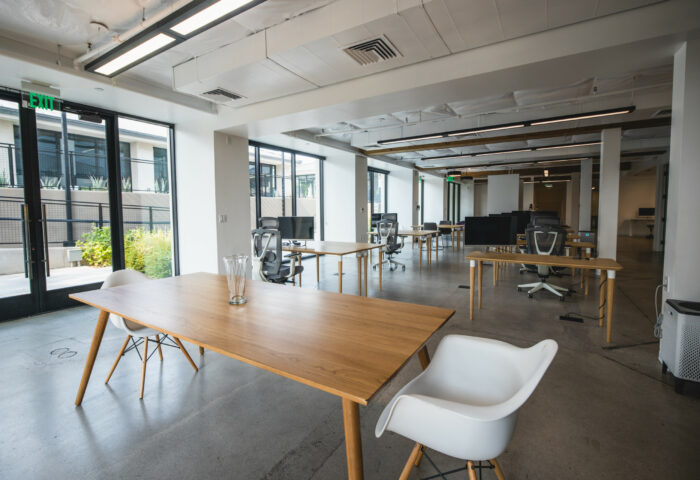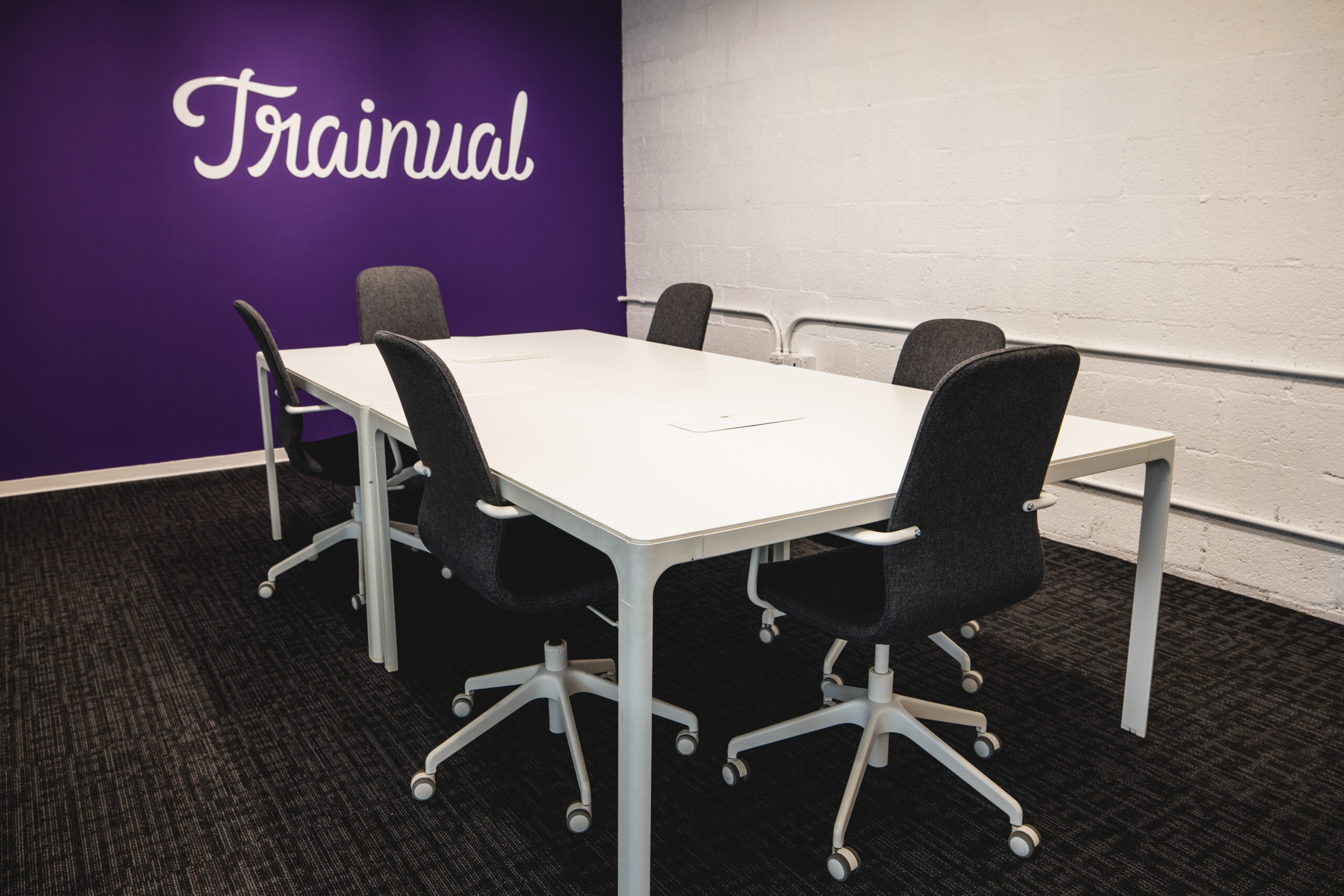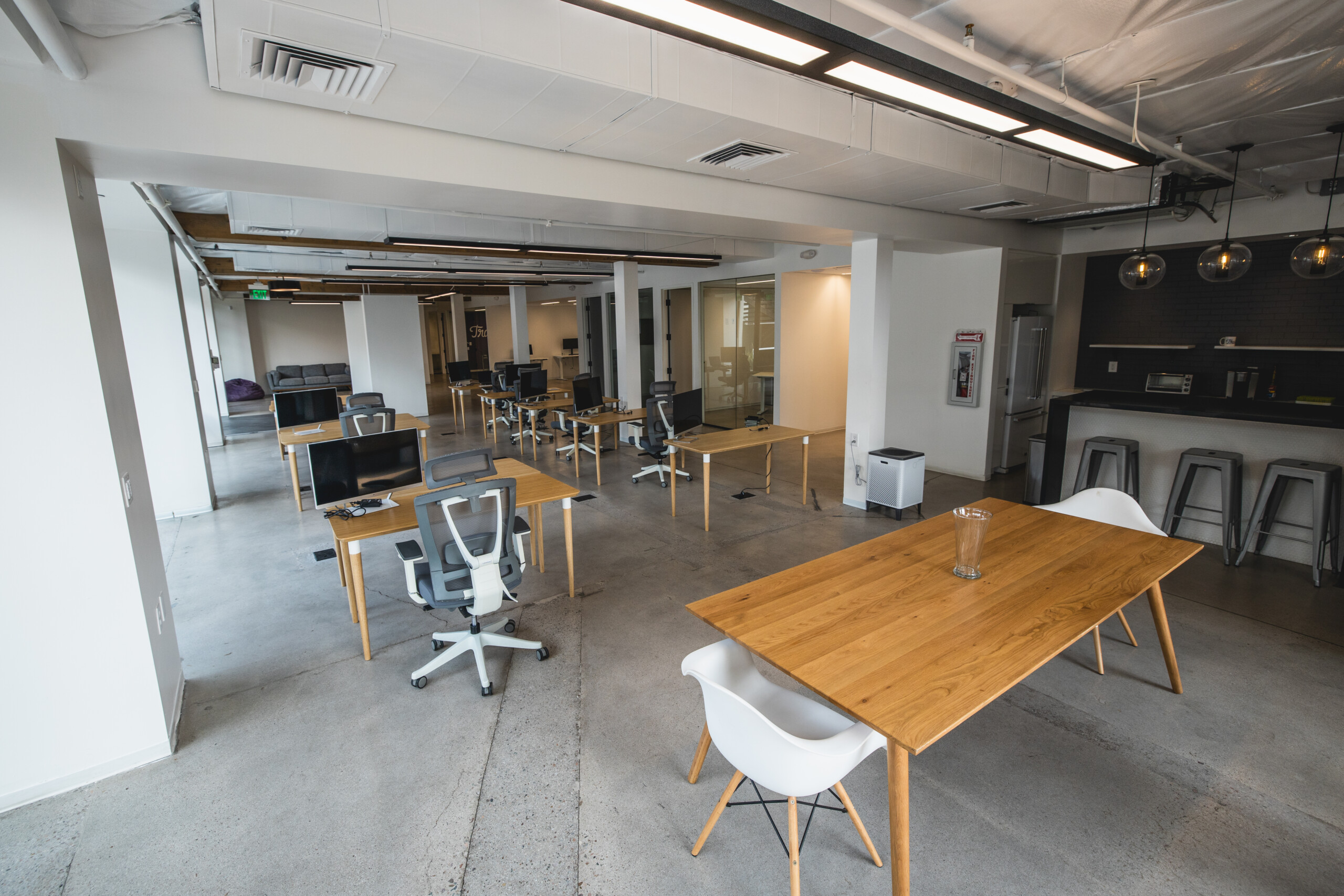
Articles
The Shift From Coworking To Company Hubs
December 23, 2020

Originally published as a Forbes Council Post by Chris Ronzio.
Headquarters used to make sense. Why not put your entire company in one building and have everyone clock in and out? But when remote work proved productive, it challenged the notion that each company needed its own office.
So co-working had its day. Droves of companies shared common spaces, ideas, and the expensive overhead that comes with nice buildings.
But since the pandemic hit, sharing with strangers isn't as enticing as it once was. Because splitting rent also means sharing your workspace with people you don't know. So the way our teams worked changed again.
Design Pickle CEO Russ Perry and I found ourselves questioning how our company spaces could better support our teams. And in the process, we both founded our Company Hubs, albeit inadvertently.
Goodbye offices, hello Company Hubs
When Trainual's lease expired in May, our team started working from their bedrooms, kitchens, and sofas while leadership contemplated next steps.
We talked about a new headquarters, big enough for everyone to socially distance. But who wants to commit to a multiyear lease with so much uncertainty? And co-working was still an option but didn't guarantee a safe working environment.
However, I knew not everyone was thriving working from home. So I opted for a new Company Hub. That way, my team could have options on where they worked.
Meanwhile, Design Pickle was slated to spend over $100k on desks, call rooms, and other furniture for its Scottsdale headquarters.
"We were bursting at the seams trying to cram our growing team into one office," Russ told me. "We had the mindset that everyone needed to be physically present."

But Design Pickle paused its plans, and overnight, everyone transitioned to remote. Despite this shift, Russ continues to see his company succeed. "I realized we had an irrational commitment to people coming to work," Russ said.
But with its office still an expense, Russ figured there was no point letting it go to waste. So he opened the doors as a Company Hub that anyone on his team could use.
What exactly is a Company Hub?
A Company Hub is a distributed company's physical home--one where employees and customers can visit freely, connect, and collaborate.
Similar to a headquarters, it's a private space. Access is limited to those directly related to the company. But like co-working, there are no assigned desks or fixed schedules. Meaning, a Company Hub is used according to the company's unique needs.

For Trainual, this looks like a 4,300-square-foot facility in a centralized location. It's spacious enough that 50% of our company can work there at a time without compromising social distancing. And it offers a retreat for team members struggling to work from home.
More benefits than risks
The benefits of a Company Hub combine years of workforce evolutions, accelerated by the impacts of Covid-19 and remote work.
For the employee, a Company Hub:
- provides a home for the company and a place for team members to connect,
- has features and benefits -- making it a destination,
- offers private and group work environments, any time of day, and
- promotes flexibility to balance the demands of life, outside the 9-to-5 window.
For the company, a Company Hub:
- promotes the brand and company culture to stakeholders,
- is a safe and secure resource for the company and their immediate community,
- reduces infrastructure costs as the company grows, and
- bridges a remote workforce with not-so-remote resources, such as space and support.
But there are some risks when starting a Company Hub.
Admittedly, a Company Hub doesn't have the structure of a traditional headquarters. So if your company lacks accountability and clear expectations, your leadership team might feel insecure about the arrangement.
But these feelings are more a reflection of your company culture than how your team is handling a remote work environment.
However, tools are available to help with this transition. For example, Design Pickle uses online management tools -- like EOS -- to cohesively manage and delegate responsibilities across the company while remote.

And Trainual, to no one's surprise, uses our own app to keep our team aligned and accountable from anywhere.
Creating your own Company Hub
There's no official playbook for starting a Company Hub. But here are five steps both companies took to make the transition:
- Trust that a fully remote company can do the job as well, if not better than your old model.
- Make the announcement -- you're now 100 percent remote!
- Create a safe, physical space that meets your remote team's needs.
- Use technology to keep your team aligned and accountable.
- Know that no two Company Hubs are the same, so involve your team to make yours your own.
The future of work is remote. And Company Hubs allow your company to lean into it -- while still supporting your team better than ever.
Similar Blog Posts











